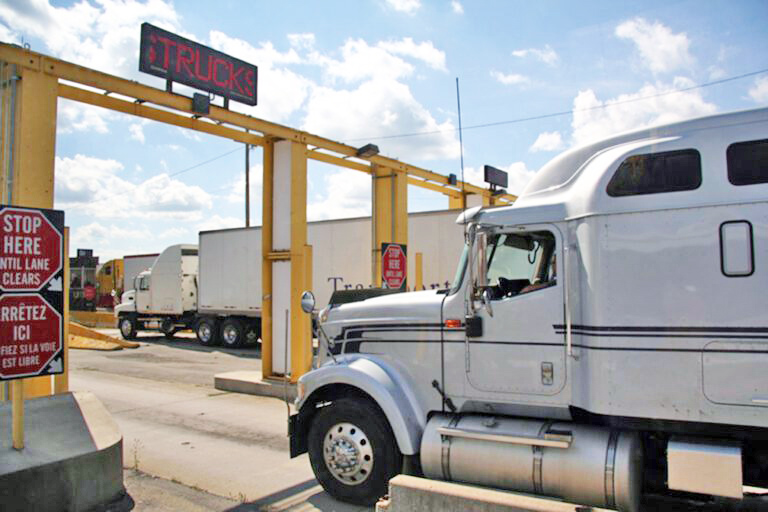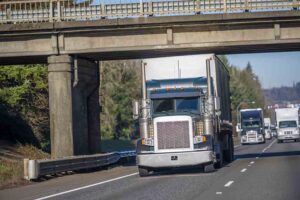WASHINGTON – The American Trucking Associations (ATA) has announced support of the National Defense Authorization Act (NDAA) Conference Report, which aims to improvement access to military bases and strengthen cross-border trade.
The House and Senate must now pass the legislation before heading to the president’s desk for it to be signed into law.
“These wins for trucking are particularly noteworthy during a Congress that hasn’t found agreement often,” said Bill Sullivan, ATA’s chief advocacy and public affairs officer. “It proves that we still can push good policies forward and succeed.”
BASE ACCESSGetting through the gates at U.S. military bases is a challenge for truck drivers and motor carriers, including those that regularly move service members, deliver personal packages or transport arms and ammunition, according to the ATA.
ATA’s Moving and Storage Conference, the Government Freight Conference and their respective members worked with Congressmen John Garamendi (D-California) and Mark Alford (R-Missouri) to secure language in the NDAA intended to improve the base access process while maintaining robust security standards. “Base access is a challenge for carriers, whether you’re hauling arms and ammunition or household goods,” said Mike Matousek, director of the ATA Government Freight Conference. “Part of the solution is a workable fitness standard that is consistent across the Services, a requirement for Department of Defense (DoD) to move the ball forward and a way to hold the agency accountable for inaction. This is what the Conference Report accomplishes.”
Ryan Bowley, executive director of the ATA Moving and Storage Conference, said that more than 300,000 military families relocate each year, and efficient and consistent access to military bases for movers and crew members is essential to meeting their needs while also supporting military readiness.
“We applaud Congress for including this important provision, and as DoD works on implementation, we urge engagement with movers and other industries who provide important support to our national security,” Bowley added. The Conference Report requires DoD to update its fitness standard in the base access manual, sets specific deadlines for DoD to meet and requires DoD to brief Congress along the way.
INTERNATIONAL BRIDGE PERMITTING
Following a request made by an ATA and Texas Trucking Association-led coalition, the Conference Report retained a provision that aims to expedite permitting to build or expand cross-border bridges between Texas and Mexico. In 2022, trade between the U.S. and Mexico totaled nearly $780 billion, and this figure is expected to increase as companies move their businesses and supply chains back to North America. Accelerating improvements for these vital trade corridors is essential to accommodate the growth in trade along the southern border, create American jobs, and reduce dependence on China. “Trade between the U.S. and Mexico supports millions of American jobs, but delays in building new bridges and expanding existing ones create bottlenecks that impede economic growth,” said Jon Samson, ATA’s vice president of conferences. “We strongly advocated for this provision to cut through permitting red tape and speed up cross-border transportation projects, which will help prevent truck drivers from being stuck in traffic, encourage businesses to relocate to North America and catalyze manufacturing on both sides of the border.” The agreement will expedite the presidential permitting process for these bridges without compromising environmental reviews. Specifically, this section of the NDAA would set up a 60-day timeline for the State Department to recommend an application to the president and give the president an additional 60 days to approve or deny a permit. A permit could be conditioned on a project receiving a National Environmental Policy Act permit.
Born and raised in Little Rock, AR, Erica N. Guy decided to stay in her hometown to begin her professional career in journalism. Since obtaining her bachelor’s degree from UAPB, Erica has professionally written for several publications about several topics ranging from lifestyle, tech, culture, and entertainment, just to name a few. Continuing her love for her hometown, she joined our team in June 2023, where she is currently a staff writer. Her career goals include continuing storytelling through her writing by being the best professional writer she can be. In her spare time, Erica enjoys trying new foods, cozying up with a good book, spending time with family and friends, and establishing herself as a future businesswoman.















